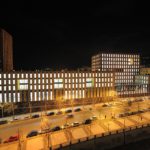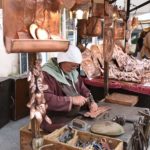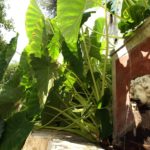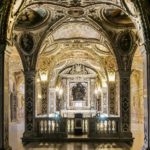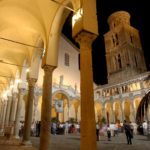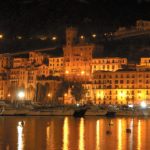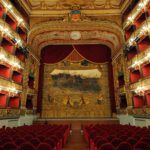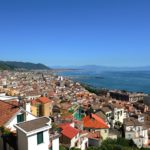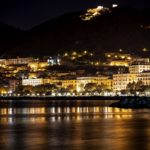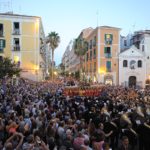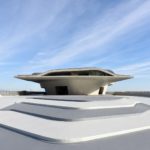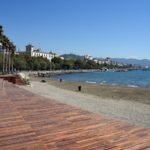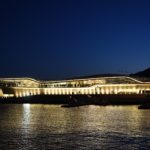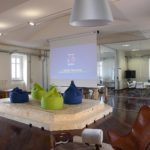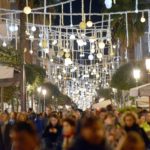Presentation of the town
Salerno is an Italian town of about 135 thousand inhabitants, capital of the homonymous province of the Campania region. The city lies on the homonymous gulf of the Tyrrhenian Sea, between the Amalfi coast (to the west) and the Sele plain (to the south-east).
Salerno is a fascinating example of what the Mediterranean has to offer all those who wish to have a closer knowledge of it. The town presents itself as a friendly community to visitors and tourists from all over the world.
Over the last few years the town council has improved its urban aspect and recuperated the socio-economic functions of the area:ancient monuments and churches have been restored;new parks and gardens have been opened in various town quarters; roads and squares have been replenished with plants and benches and lit by ornate street lamps, many spaces have been retrieved for artistic, cultural and recreation activities; sports facilities have been increased with the building of new structures such as the Arechi Stadium.
Since 1993, the renovation of Salerno downtown, with the requalification of a historically dense environment, has been very successful and now, Salerno downtown is very active and known for its nightlife (the Salerno “movida”), as well for the quality of the touristic offer for the visitors. At the same time, the town council has been undertaking several very important projects to renovate and requalify the waterfront. With the help of several internationally known architects, such as Zaha Hadid, Santiago Calatrava and Ricardo Bofill, the projects include the new touristic harbour, the new Commercial Harbour, Station, Piazza della Concordia and Piazza della Libertà. With this strong long-term effort, the town council of Salerno is also planning several actions to improve the mobility of the daily activitiesof citizens, by planning new roads, parking, public transportation routes, etc.
As far as cultural and landscape heritage is concerned, the Municipality of Salerno owns many cultural goods (the convent of Santa Sofia, St. Nicholasof Palma, San Lorenzo, San Michele, etc. ) noble buildings (Galdieri palace, S. Massimo palace,Fruscione palace, etc.) and landscape heritage (garden of Minerva, Seminary Park, MercatelloPark, Irno Park, Pinocchio Park, etc).
Furthermore, the Municipality of Salerno has been realizing several actions to improvethe tourism in downtown. Among them, a very successful one is the “Artists lights” (Luci d’artista) that, since 2006, has been attracting many visits from the surrounding areas, at the regional level and more. With exhibitions lasting almost three months, visitors for a single weekend have been estimated to be over 200.000.
One can see the many traces of ancient history mixed with the artesan shops and places of entertainment where people throng, in the old town of Salerno which is both quite extraordinary and charming. The recovery of the old town was accomplished thanks to the Urban project financial funds which have enabled the discovery of artistic and cultural treasure. Today one can read the town’s history merely by looking at the alleys and squares, the churches and buildings. One can perceive the course of eventswhich have followed, a testimony of the flourishing economic, social and cultural splendour of the past centuries.
Focus CLIC Project
The goal of Municipality of Salerno, as a CLIC partner, is to support a circular city model for urban development policies through these steps:
- by knowingthe state of use of the assets and their productive potential, identifying the useful life and the residual economic life linked to their current use;
- byhypothesizinga planning model forregenerating assets that have a final economic life but are able to generate utility through reuse policies;
- by hypothesizing, in the case of assets that have exhausted their life cycle, a model of strategic approach to the restoration of the environment in aform as close as possible to the original, thus respecting the historical, architectural and environmental constraints and giving back to the citizens green, free and usable areas.
